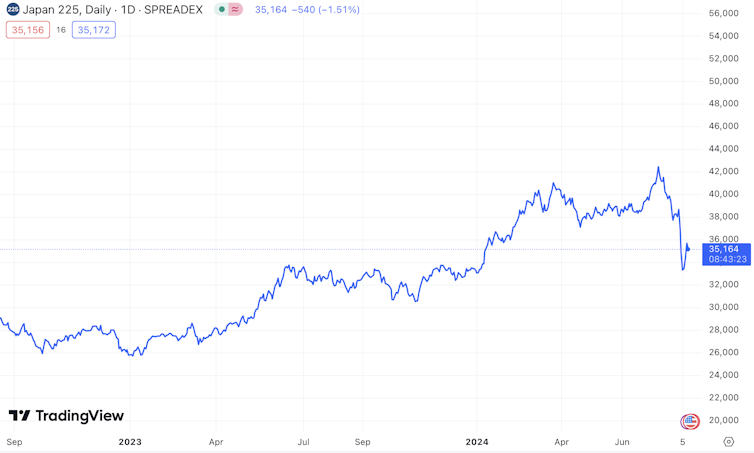A carry crash also kicked off the global financial crisis 17 years ago — here’s why it’s unlikely to get as bad this time
- Written by Charles Read, Fellow in Economics and History at Corpus Christi College, University of Cambridge

Many casual readers of the financial press will have learned a new term in the past few days: the “carry trade”. This is the culprit for the rollercoaster state of markets, many market commentators and journalists have opined[1].
Indeed it also played a role[2] in kicking off the credit crunch and resulting global financial crisis in 2007-08. Should we fear a repeat? The answer this time is both yes and no.
The current rumpus started on Friday August 2 when markets in America dropped in response to worse-than-expected data[3] on the number of new jobs created in July. Then Japanese stocks[4] took a bigger battering on Monday, posting the biggest ever one-day drop in the Nikkei, the country’s main share index. Since then, markets have gyrated up and down as traders and investors attempt to understand what is going on.
So why has the carry trade got the blame? First, a quick explanation of how it works. The carry trade is a financial strategy used by professional investors and also amateurs in the currency market to make money from differences between interest rates in different countries. Investors borrow money in a currency with a low interest-rate and invest it in a currency with a higher interest rate to make a profit.
Investors had been going to town with this strategy in recent years, borrowing cheaply in Japan in yen, where interest rates are still low (0.25%), and investing in place where rates are higher, such as the United States (5.25%-5.5%) and Mexico (10.75%). Researchers at Swiss bank UBS estimate that[5] since 2011, more than US$500 billion (£392 billion) in US dollar-yen carry trades have taken place.
Nikkei average, 2023-24







